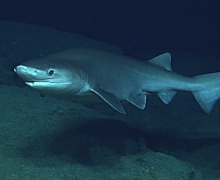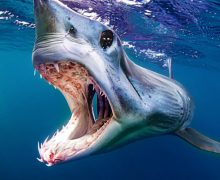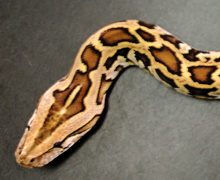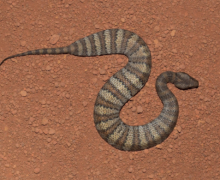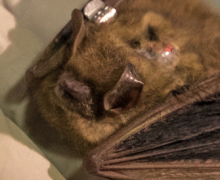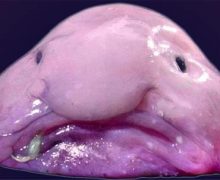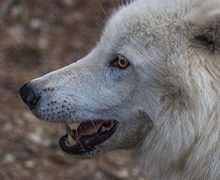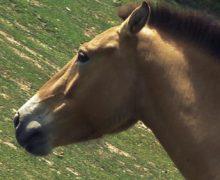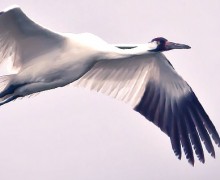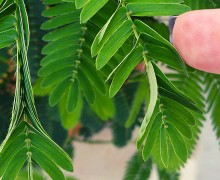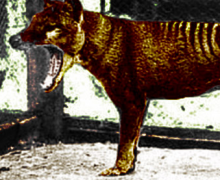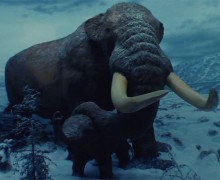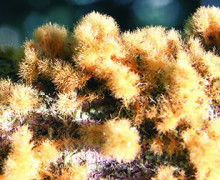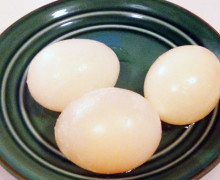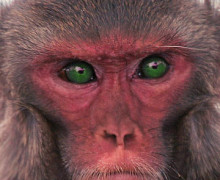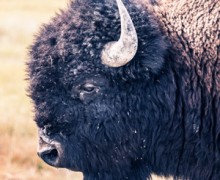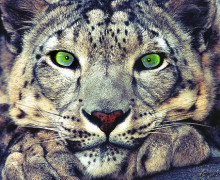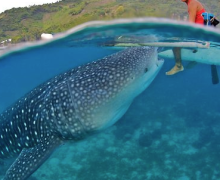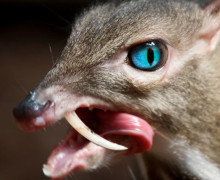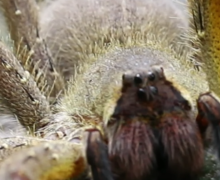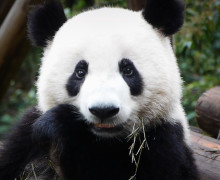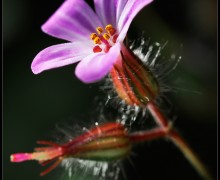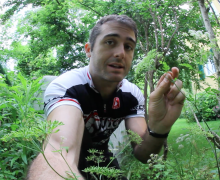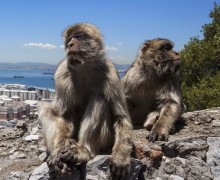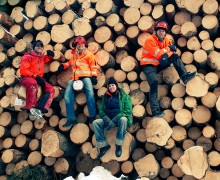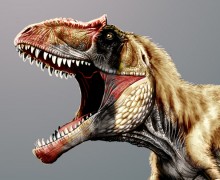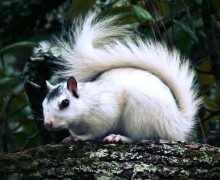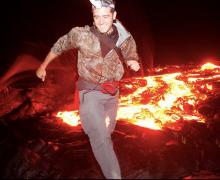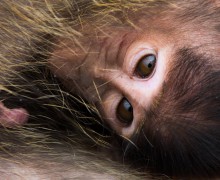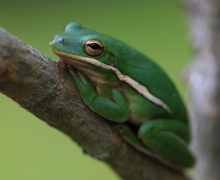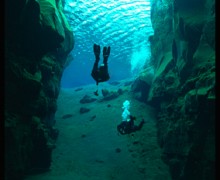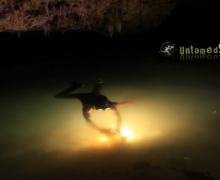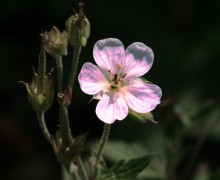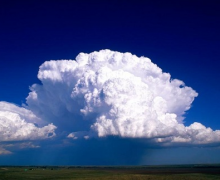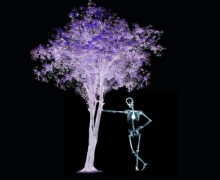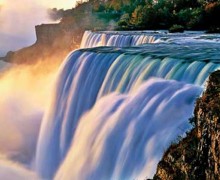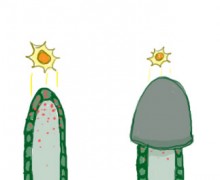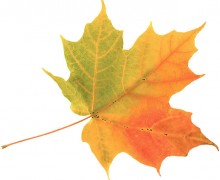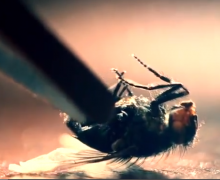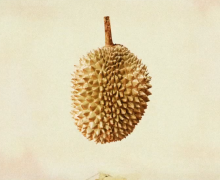The Sika Deer, also known as the Spotted Deer or the Japanese Deer (Cervus nippon), is a species of deer that is native to much of East Asia and also introduced to various parts of the world. It was previously found from Vietnam to the south and Russia to the north. Their name comes from “shika” (鹿), the Japanese word for “deer.” The sika deer is not to be confused with the sitka deer, which is a subspecies of the mule deer, a distantly related species.
Archives: Biodiversity
Short-beaked Echidna
The Spiny Anteater
The Short-beaked Echidna (Tachyglossus aculeatus) is also known in Australia as the Spiny Anteater, though it is not related to other anteaters. However it does feed on ants and termites. It is one of only four living species of echidna and one of only five living monotremes (egg-laying mammals).
Where is the Short-beaked Echidna found?
This species is found across Australia and southwestern New Guinea. While this echidna species is currently not in danger of extinction, its numbers have been reduced due to the introduction of predatory animals, parasites, and disease.
Red Panda
Description
Red pandas, which resemble raccoons, are about 42 inches long, including a long, bushy tail. They weigh between seven and 14 pounds. Their red-and-white markings blend in with the red mosses and white lichens that grow on the trees in which they live. Their soft, dense fur covers their entire body, even the soles of their feet. Red pandas use their long, bushy tails to balance when they’re in trees. They also cover themselves with their tails in winter.
Distribution and Habitat
Red pandas live in the cool, temperate bamboo forests in China’s Sichuan and Yunnan Provinces, in the Himalayas, and in Myanmar. They share part of their range with giant pandas.
Diet
Red pandas primarily eat bamboo leaves, as well as berries, blossoms, bird eggs, and various plants’ small leaves. Their broad teeth and strong jaws allow them to chew bamboo’s tough leaves and stalks. They also have a small, bony projection on their wrists that helps them grip bamboo stalks. Giant pandas also have this thumb-like adaptation.
Reproduction
After a gestation of about 134 days, litters of one to four young are born. Young stay in the nest for about 90 days, remain close to their mother until the next mating season begins, and reach adult size at about 12 months. Adult red pandas lead solitary lives.
Conservation
Red pandas are endangered because of habitat loss. There are fewer than 2500 adult red pandas.
Red Panda facts
- Red Pandas are great tree climbers.
- Red Pandas eat the leaves of bamboo; Giant Pandas mostly eat the stems and shoots.
- Red pandas are mostly solitary animals.
- Red Pandas are active during the day.
Red Kangaroo
Macropus rufus is known as the Red Kangaroo. It is the largest kangaroo in the world and the largest mammal in Australia. It is also the largest living marsupial. This kangaroo lives in all areas of Australia but is harder to find in the east, south, and northern portions of the continent.
Red Deer
One of the Largest European Deer
The Red Deer is the European equivalent of the North American Elk. Behind the moose and the Elk, it is one of the largest deer (cervids) in the world. Red Deer are found in most of Europe, including the Caucasus Mountains, Asia Minor, and parts of western and central Asia. It is sometimes found in parts of Africa but only rarely. The deer have also been introduced to parts of Australia, New Zealand, and Argentina.
Red Deer are not in danger of extinction. Reintroduction and conservation projects have helped to increase Red Deer populations. However, many areas of the world still show signs of decline in red deer populations.
Pygmy Slow Loris
A Rare Primate
The Pygmy Slow Loris is one of three species of slow lorises that exist today. All are quite rare, and this species is no exception. It’s found in dry tropical forests in Vietnam, Laos, China, and Cambodia. According to scientists at the San Diego Zoo there are about 72,000 species in the wild and as of 2006, 183 in captivity. Lorises are small primates, relatives of apes and monkeys.
Small, Quiet, Nocturnal Omnivores
Lorises are omnivores that are active at night. They will eat insects, fruits, snails, and small mammals. They live in trees, crawling slowly through the branches and thick leaves. These small primates are very tiny and only weigh about one pound when full grown.
Loris’ Reproduction
Lorises have relatively slow growth for a small mammal. Gestation for young is about 190 days. After birth newborns stick with their mother for about nine more months. Female lorises reach sexual maturity at around nine months, males between 17 and 20 months.
Toxic Mammals
Lorises are one of the few mammals that can produce toxic compounds. They produce toxins via a gland in their armpits. They then lick it and hold it in their mouths. If they bite in defense it will inject the toxic compounds. Its not known to be fatal to humans, but great swelling will result.
Other Interesting Videos on Lorises
http://www.youtube.com/watch?v=PFNf57VoF7A
Polar Bear
Description
Weighing up to 1800 pounds, the polar bear is the largest of the three North American bear species. Polar bears’ heads are longer and narrower than grizzly bears’ or black bears’. Their noses are very large, and their small, round ears are fur-covered, inside and out. The front legs of polar bears appear slightly bowed and pigeon-toed. Their back legs are long. Polar bears’ claws are shorter and more strongly curved than grizzly bears’ and are larger and heavier than black bears’ claws. Polar bear teeth are adapted for grabbing prey and shearing meat and hide. Unlike grizzly bear teeth, their teeth are not well equipped for chewing vegetation.
Adaptations for Survival in a Harsh Environment
Classified as marine mammals, polar bears exhibit specific adaptations to an icy, aquatic environment. A thick two- to four-inch layer of fat, or blubber, helps insulate polar bears from freezing temperatures and ice-cold water. It also helps them float. During the summer, when food is limited, blubber acts as a nutritional reserve.
Polar bears’ dense, thick undercoats are protected by long guard hairs that stick together when wet, forming waterproof barriers. Although their coats appear white, each individual hair is actually a clear, hollow tube. These hollow hairs fill with air, holding in body heat and insulating from the cold. It is debatable if these hairs also help keep polar bears warm by funneling solar radiation to their black skin. At times, polar bear fur may appear yellowish due to staining or impurities that accumulate inside the hollow hairs.
Polar bears are excellent swimmers, reaching speeds of up to six miles per hour. They have been observed swimming 100 miles from land. Their large, partially webbed forepaws function as paddles while their hind paws act as rudders. To prevent water from entering their ears when diving, their ear canals close. On land, polar bears’ large, flat feet help them shovel snow to create dens. Small papillae and little indentations on the footpads provide traction. The bottoms of the paws are fur-covered.
Male polar bears spend the winter on the pack ice. Pregnant females, however, dig out a snow cave early in winter. The snow covers them as winter progresses. While in their dens, they give birth and nourish their new cubs. This period may last eight months. During this time, they survive off their fat reserves. Like other North American bears, polar bears may wake during hibernation in response to environmental or physical stimuli. When the cubs are approximately three months old, the family emerges from the den. Although pregnant female polar bears enter dens for the entire winter, any polar bear may create a shelter to avoid storms, extreme temperatures, or periods of poor hunting.
Diet
Polar bears are primarily carnivores (meat eaters). They usually prey on ringed seals and bearded seals. They have several hunting strategies. Polar bears may stalk seals by slowly creeping toward them on the ice. They also “still hunt” seals by lying in wait near the seals’ breathing holes and quickly grabbing them with their sharp front teeth when they come up for air. Polar bears eat only the fat rich skin and blubber of the seals. Polar bears also prey on beluga whales and walruses. When the ice melts and polar bears cannot hunt these meat sources, they may eat voles, carrion, seaweed, berries, bird eggs, and grasses. Like other bears, polar bears eat humans’ garbage, too.
Threats to Population
Infrequently, polar bears are killed by walruses or in fights with other bears. However, human activities such as oil and gas exploration, climate change, habitat change, and hunting are some of the serious threats polar bears face.
There are also places were polar bears are hunted by humans, despite efforts by conservationists. Learn more about threats to the polar bear at PolarBearInternational.org.
A Short Video from Polar Bear International
Read more:
Palawan Bearded Pig
The Palawan Bearded Pig (Sus ahoenobarbus), while formerly treated as a subspecies of the bearded pig, was recently elevated to a new species by Groves (2001) and Lucchini et al. (2005). Thus, there is very little information on the web on it. We have yet to find a good video on this species. If you have a video of this pig, please contact us.
Where does the Palawan Bearded Pig Live?
Palawan bearded pigs are endemic to the Philippines, particularly to the Palawan Faunal Region. This means they’re found there and nowhere else on earth. These pigs have been recorded from many places in this region: Busuanga, Calauit, and the Calamain islands (including Culion and Coron).
North American Beaver
Physical Characteristics
North American Beavers are smaller than their European cousins but look very similar. Each have short faces with large incisors meant for chewing and cutting wood. The teeth appear orange-yellow in color, because the thick enamel contains iron deposits which keep the enamel strong. Because the teeth have hard enamel up front and softer material called dentin in the back, this rodent’s teeth are self-sharpening! Beavers use these teeth to cut down trees and shrubs to build their dams and lodges.
Beavers have long flat tails which can serve a variety of purposes. The tail contains fat deposits which the beaver can use as energy during times when food is scarce. It can be used as a seat while at rest and a rudder while swimming. When a beaver feels threatened it will slap its tail on the surface of the water, warning other beavers in the area that trouble is approaching!
Beavers are a semi-aquatic mammal, which means they spend a lot of time in water. To help them in the water, beavers have webbed feet and can produce an oil to spread all over their fur. The oily fur creates a buffer between the beaver’s skin and the cold water so the they can stay warm. Beavers produce a chemical called castoreum from their scent glands which they use to mark. Castoreum has been used medicinally for centuries and is one of the reasons beaver populations plummeted after human colonization.
Habitat
Beavers are known for damming up rivers and creating large wetlands and lakes where they build their lodges. When they find a suitable stream or river they will begin cutting down large trees and placing them vertically in the bed of the river. When they have a solid foundation, they will then start placing logs horizontally across the beams until they dam up the river. When the water backs up along the stream it can create a lake or wetland which the beaver can use to build a lodge. Lodges are the beaver’s home; they use them as shelter, a den for rearing pups, and even as a source of food in the winter! While they are building their lodge, beavers use enough mud to completely insulate them against the cold in the winter. Their body heat is enough to warm the small living space inside the lodge and the hard mud insulating them even serves as protection from predators. Predators like coyotes and wolves are no match for the ingenuity of a beaver!
Lion
King of the Cats
Lions are members of the family Felidae. They are one of four big cats in the genus Panthera, with the Jaguar, Leopard, and Tiger. Today, wild lions can be found in both sub-Saharan Africa and Asia. In Western India there is a small and critically endangered population.

How long to lions live?
While both male and female lions can live for more than 20 years in the wild, most lions live for only about eight years. In certain protected parks, such as Kruger National Park, lions may live for 12 to 14 years on average.
What do lions eat?
Lions are carnivores and predators. They prey generally on large ungulates, such as african buffalo and gazelles. While humans are not a lions main prey, they will attack humans if the opportunity presents itself. Thus, care should be given at all times when in the bush in a lion’s native range.
What habitat do lions live in?
Lions live in the tropical savanna and grasslands of Africa. They may also venture into the bush and forest. However, they have unique social hunting skills which make the grassland habitat a perfect fit for prey acquisition.







